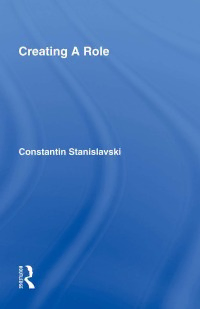
Creating A Role PDF
Preview Creating A Role
Cover Page Page: i Half Title Page Page: i Other Title Page: ii Title Page Page: iii Copyright Page Page: iv Foreword by Robert Lewis Page: v Translator's Note Page: ix Table of Contents Page: xiii Part I Griboyedov's Woe from Wit Page: xiv I. The Period of Study Page: 1 First Acquaintance with a Part Page: 3 Analysis Page: 7 Studying the External Circumstances Page: 12 Putting Life into External Circumstances Page: 18 Creating Inner Circumstances Page: 25 Appraising the Facts Page: 34 II. The Period of Emotional Experience Page: 43 Inner Impulses and Inner Action Page: 44 Creative Objectives Page: 50 The Score of a Role Page: 56 The Inner Tone Page: 62 The Superobjective and Through Action Page: 77 The Superconscious Page: 81 III. The Period of Physical Embodiment Page: 84 Part II Shakespeare's Othello Page: 106 IV. First Acquaintance Page: 107 V. Creating the Physical Life of a Role Page: 130 VI. Analysis Page: 150 VII. Checking Work Done and Summing Up Page: 193 Part III Gogol's The Inspector General Page: 210 VIII. From Physical Actions to Living Image Page: 211 Appendices Page: 251 a. Supplement to Creating a Role Page: 251 b. Improvisations on Othello Page: 255
Description: